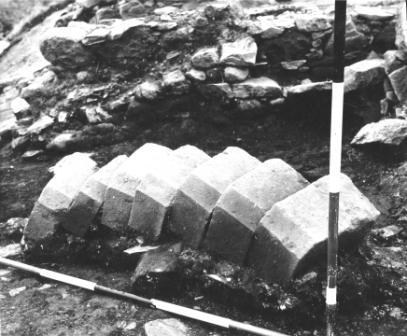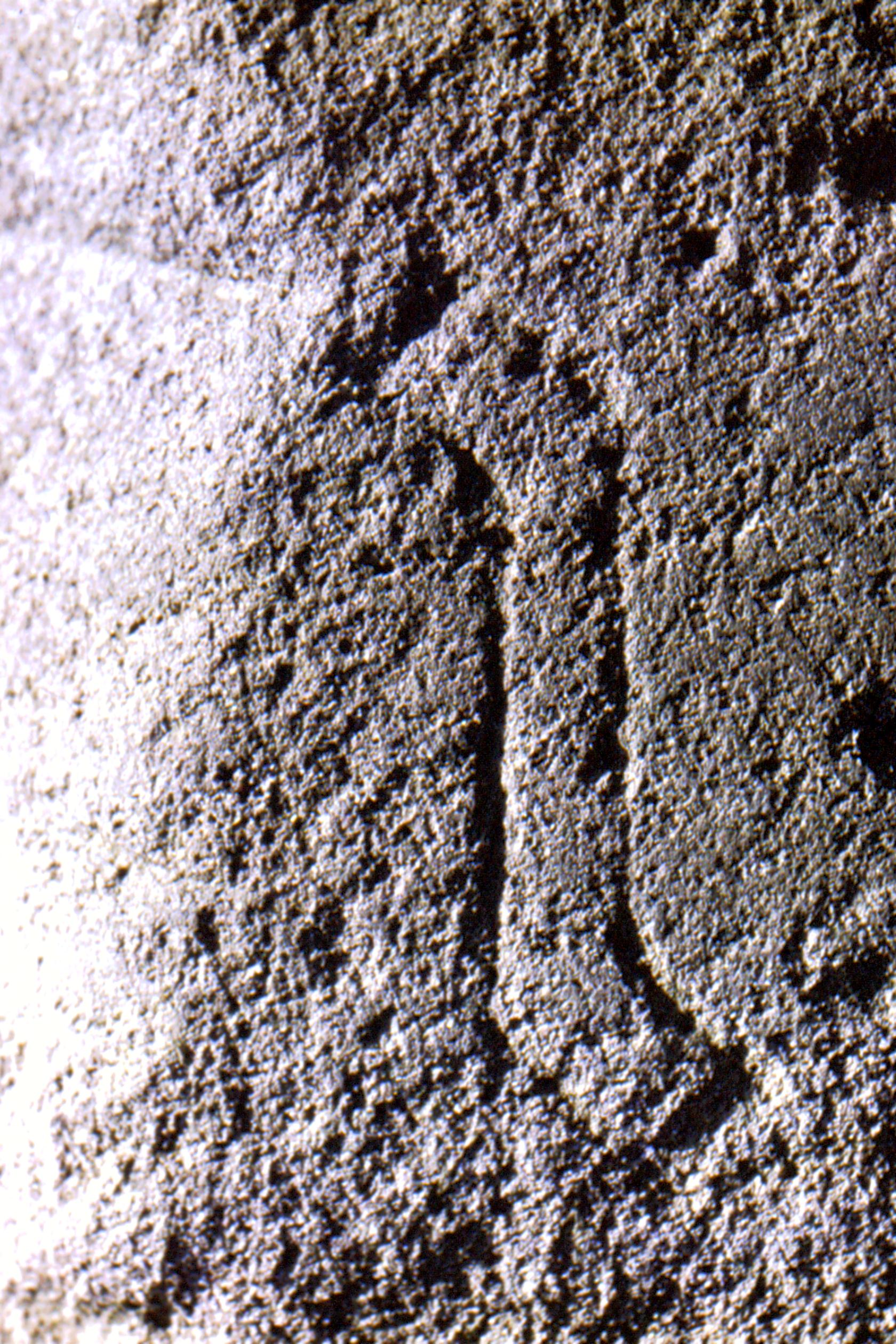 
This Project all started because of one single mason’s mark found on a collapsed fireplace arch within the remains of a castle at Castle Point, Troup, better known as Cullykhan, in NE Scotland (NGR: NJ 837 662). There was no record of the name of the castle or of its dates of construction.
So this one mark made me wonder if it might be possible to find the same mark on other structures in the area, which were of a known date and might have a tie of some sort to this castle, and thus help with possible dating of this part of the castle. Through this project we did actually achieve this, along with a great deal of documentary research, to a mid-16th century date.
So, from such a small thing grew this large project. It has slowly developed and will continue to develop, over the years with a number of different aims, some of which may never be achieved.
From what was once such a strong Medieval Guild it is hard to believe that little information now survives on the great master stone masons, who left such a built legacy. Many questions have been asked over the years as to the purpose of masons’ marks, with different views being given depending on which aspect someone has been studying.
- Was it to mark how many stones he had carved for payment purposes?
- Was the mark passed down from father to son on his death?
- If a son was working with his father and had served his apprenticeship as a mason, did he use a similar mark but with a small addition?
- Did each area of the country hold a book of marks and when working in that area the mason chose one of the marks?
We may not be able to answer all of these questions but at least we hope it may be possible to track at least one mason’s journey -perhaps.
There is a lot of information stored in Archives in Cities, Guilds, and Universities and in private Estate records, which are still waiting to be read or discovered by the determined researcher. For example in Dundee University Archives they hold a journeyman’s book, which names many of the Dundee masons along with their marks.
An original document dated 1555 from Kinnaird Castle near Brechin, is an invaluable historic record, with its details of payment and work to be undertaken by two named masons, along with their marks as signatures, as they couldn’t write. If only it was as easy for all masons’ marks, but this is basically what the aims of this project were all about – names, dates and marks. Unfortunately this has been achieved in very few cases, but over time, and with much more documentary research, more can be revealed, but probably by other researchers rather than me, as time on this earth is limited!
It is only really in the last decade or so that serious study has started on masons’ marks. In particular I would like to mention the work of Dr Jennifer Alexander. Prior to this masons’ marks were rarely recorded in publications. If they were indeed noted their location was not recorded, nor the date of the part of the structure where they were found.
While there are a number of other web sites on masons’ marks, some of which refer to marks in general, some recording marks, others referring to marks in specific buildings and others attempting to look at the history of masons’ marks, there are only a few that are able to be queried, as we hope this one can be. We also hope it may help others, who wish to study marks, and are perhaps looking for specific marks.
It will be noted that some of the more simple marks are found over an extensive geographic area as well as over a long time frame, (or there were some very old stone masons), while others can be attributed to a specific period in time, or on a specific building. They are therefore a useful tool in assisting with defining building phases of a large structure.
Although all marks recorded by the Project have been photographed only one sample of each mason's mark is shown in the database as an example of his mark.
|